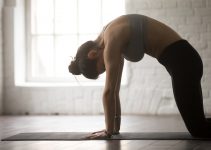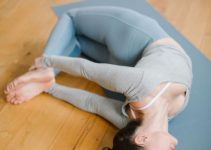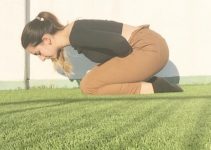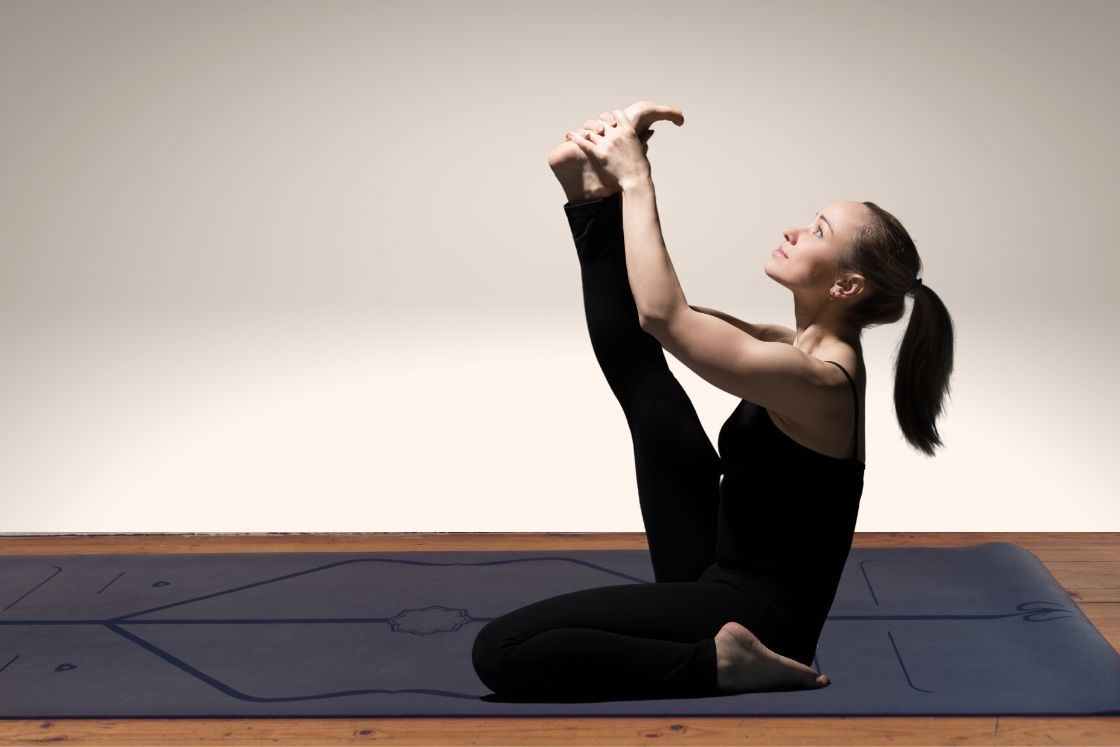
Krounchasana is a unique alteration of paschimottanasana. It is an advanced seating posture involving the elements of ardha virasana and Janu sirsasana.
Getting into krounchasana requires the yogi to attain ardha virasana with a vertically lifted stretched leg drawn towards the face.
It provides an intense stretching to the back, hips, and entire leg muscles. Besides these, it lengthens the spine and strengthens the core.
Meaning
Krounchasana is a Sanskrit name, better understood by digging the root terms. Here, ‘krouncha‘ refers to ‘heron’, and ‘asana‘ is ‘pose,’ that explains its English name, i.e. heron pose.
Mythological Interpretation
Krauncha is a mountain peak, addressed as a grandson of the Himalaya. The mythological viewpoint says that once there was a battle between Lord Kartikeya and the demon Tarakasura.
Mount Krauncha supported Tarakasura irrespective of his evil deeds to prove his friendship. This outraged Kartikeya and he pierced the Krauncha in anger.
Mount Kraucha’s biased (asymmetric) decision made it lose its integrity. It shows the importance of finding a balance and analyzing between right and wrong while making a move.
This story resembles the Krounchasana, as the pose is about finding a balance or stability while experiencing an asymmetrical stretch in the legs. Also, the stretched leg in krounchasana resembles the precipice, therefore linked with the name of Mount Krauncha.
Krounchasana Practice Guide
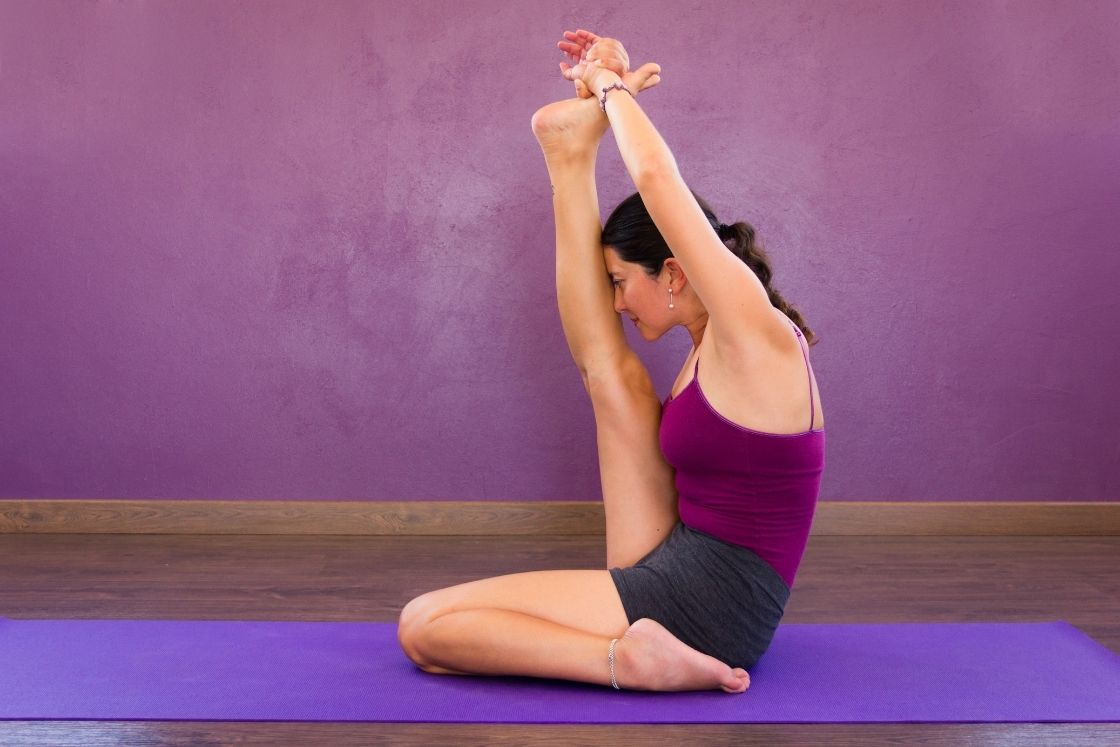
Precautions & Contraindications
- Avoid krounchasana in case of an injury in ankles, knees, or hips.
- It should be skipped while menstruating.
- A modified version (given below) should be tried in case of lower back pain or injury.
- While holding the stretched leg with your hands ensure that the back is kept erect. The action of leaning forward and drawing the leg inwards must not lose the integrity of the back.
Preparatory poses
- Downward Facing Dog Pose (Adho Mukha Svanasana)
- Hero Pose (Virasana)
- Bound Angle Pose (Baddha Konasana)
- Head-to-Knee Pose (Janu Sirsasana)
- Seated Forward Bend (Paschimottanasana)
Krounchasana Steps
- Come over your mat and sit in dandasana.
- Draw your right foot back by bending at the knee, i.e. Ardha virasana.
- Place the right foot beside the right hip joint, so that the inner right calf touches the outer right thigh.
- Keep the knees together.
- Exhale, bend the left knee, and hold the left foot with hands.
- Stretch the leg up vertically, keeping the back erect breathing normally.
- As you exhale, draw your head and trunk towards your left leg.
- At the same time, draw your extended leg towards you and grasp your right wrist with your left hand.
- Keep your chin on your left knee.
- Hold the pose for 20-30 seconds taking deep breaths.
Releasing the pose
- Inhale bringing the head and trunk back to the center.
- Lower the left leg gently softening the knee.
- Release your hands and stretch both your legs to the front.
Repeat the steps for the alternate side for the same amount of time. Finally, relax in dandasana.
Follow-up poses
- Marichyasana I (Marichi’s Pose)
- Seated Wide Angle Pose (Upavistha Konasana)
- Seated Forward Bend (Paschimottanasana)
Modifications and Props
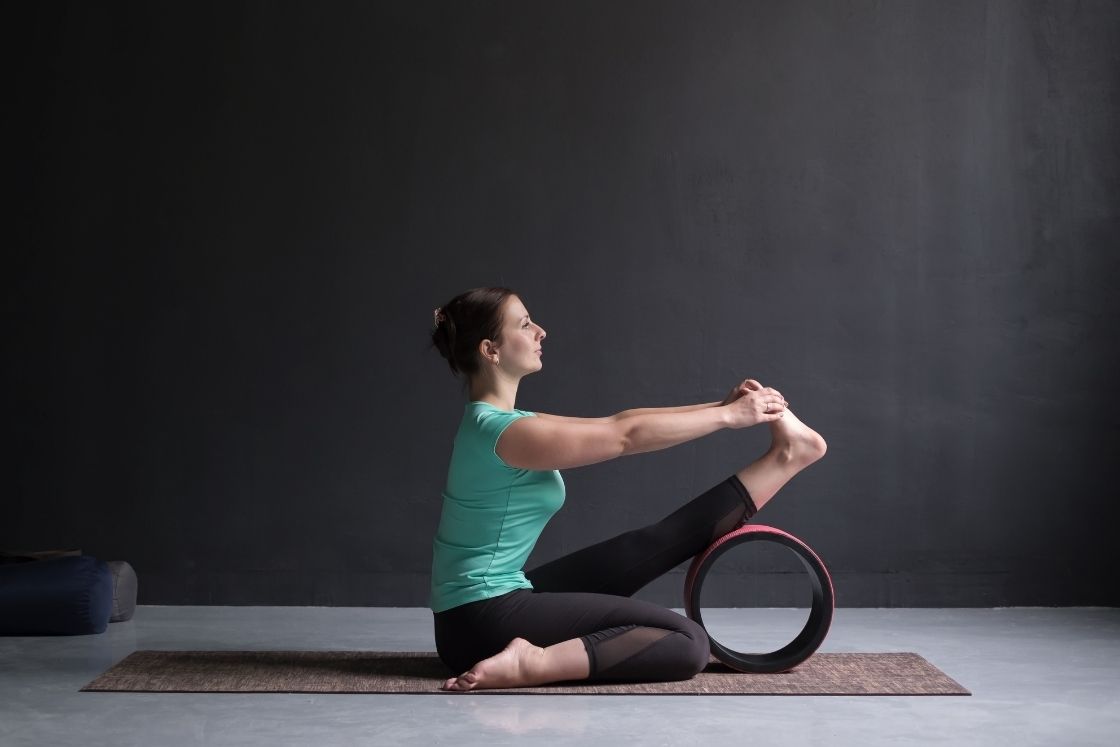
Use the following props to get stability in Krounchasana.
- Yoga block – If you are unable to find stability while sitting with a bent leg, try sitting on a block. Placing a block under your hips will exert less pressure on the bent knee and ease the pose.
- Yoga strap – Strap comes handy when you cannot reach your foot while extending it with an erect back. Wrap the strap to the back of the stretched foot. As you lift the leg hold the strap instead of grabbing the foot.
- Chair and strap – Place a chair in front of you and use a strap to lift your leg to your maximum limit. Now take support from the chair’s edge touching the raised calf to maintain the lift.
Variations
- An easy variation of Krounchasana could be holding you raised leg from the thigh or calf whichever suits you. Try it, if reaching your foot seems challenging to you.
- You might feel extra pressure on the knee while sitting in the half hero pose. If so, try practicing the asana by bending the knee and rotate it outwards touching the ground. The heel of the bent leg lies beside the stretched thigh. Then perform the further steps of vertically raising the stretched leg.
- Revolved heron pose- In this variation after raising the right leg with your hands bring your right hand in place of the left and over the heel. Twisting your torso take your left hand with the thumb pointing downwards to the outer edge of the foot. In the final posture, your head lies in between the arms.
Krounchasana Benefits
1. Stretches the muscles
Heron pose an intense asana that stretches the back and leg muscles. The muscles of the hips and hamstrings are involved in the deep stretch including the front of the ankles.
This boosts the flow of blood in these regions and maintains the elasticity and strength of the muscles.
2. Benefits the heart
Krounchasana involves holding the leg in a raised position along with breathing. This posture helps in lifting the chest and stimulates the heart. Therefore, it helps in gently exercising the heart improving its efficiency and preventing any heart disease.
3. Tones the abdominal organs
Krounchasana involves the stimulation of the core muscles. It massages and tones the abdominal organs. This strengthens the core as well as aids in proper digestion.
This pose helps get rid of flatulence and irritable bowel syndrome.
4. Relaxes the mind
The forward-leaning and bending towards to toe along with breathing opens the mental blocks. It brings a sense of stability and control to the nerves. This helps in removing any mental stress or anxiety.
5. Cures flat foot
Heron pose has therapeutic action on leg posture deformity. As one leg is kept bent with the upper foot resting on the ground. It keeps the foot naturally arched. Hence, it helps rectify the flat foot.
6. Increases will power
Krounchasana also has energetic benefits as it stimulates the Manipura chakra. This enhances the self-confidence and will power of the practitioner.
